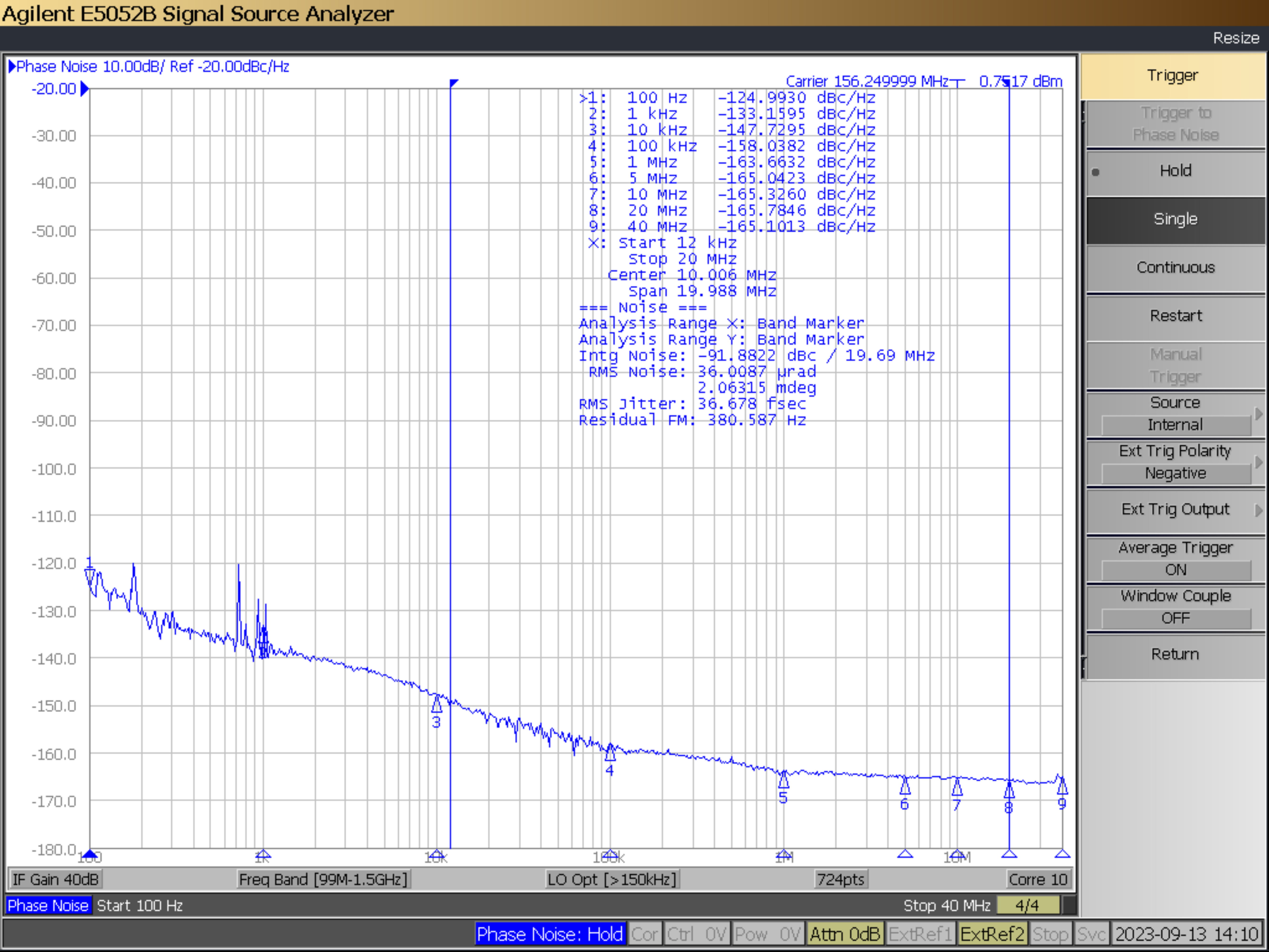SNAU298 October 2023
4.1 Typical Phase Noise Characteristic
Figure 5-1 show the typical phase noise performance for 156.25 MHz reference clock input using a SMA100B.
LMKDB1120EVM was configured in cascaded mode to get these measurements:
- SMA100B → LMKDB1120EVM input. Then, LMKDB1120EVM to secondary LMKDB1120 EVM. This was done to get good slew rate at the input. Other methods like a clipping circuit can be used to get a desired slew rate and square wave form from the SMA100B.
- Outputs phase noise is measured
through a Balun to convert the differential waveform from the LMKDB1120 into a
single-ended waveform for a phase noise analyzer.
As shown below in Figure 5-1, reference input jitter is 36.7 fs. As shown in Figure 5-2, measured jitter on the output of LMKDB1120 is 43.7 fs. Calculated typical additive jitter is about 24 fs for the LMKDB1120.
 Figure 4-1 Reference Clock Input Phase
Noise
Figure 4-1 Reference Clock Input Phase
Noise
Figure 4-2 LMKDB1120 Output Clock Phase Noise